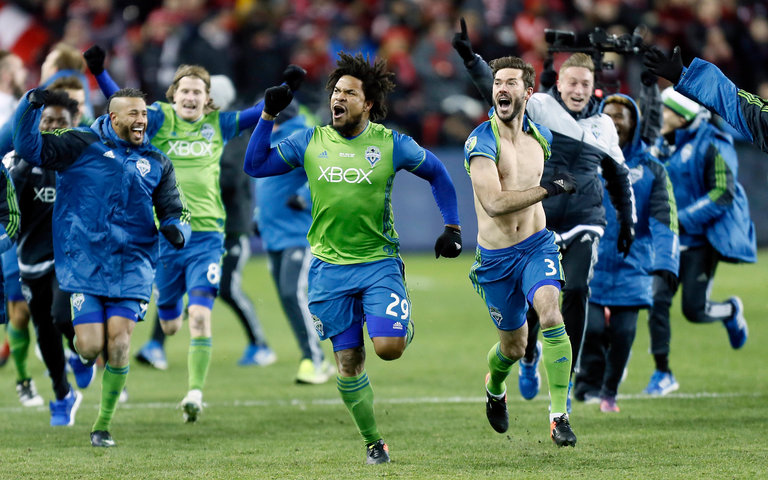
Today it’s the world junior hockey championships. Team USA won the gold medal. But Canadians are agonizing over the fact that their team lost by the dreaded shootout. Last month, the Major League Soccer crown was decided in a penalty kick shootout won by the Seattle Sounders. Toronto FC fans are still upset.
In Europe, the 2016 UEFA Champions League title was settled with anticlimactic penalty kicks after a typically scoreless overtime period. The fact that Ronaldo, the world’s greatest soccer player, scored the ultimate winning penalty kick did little to save the near-universal deflated feelings. As if the air had been kicked out of the ball by the unfair penalty shot system.
In every sport that uses overtime and then shootouts, fans, players and media complain about them. Everybody wants to see a sudden death “golden goal” that will settle the game on the field/pitch/ice/court, where the thin line between victory and defeat can be seen and experienced by all.
Yet every sport, from field and ice hockey to soccer and rugby to water polo and cricket and even baseball uses variations of overtime, whether timed periods or sudden death. These extra minutes frequently end in a draw after an extended period of play. Sports officials now have to resort to such stultifying techniques as penalty kicks, shootouts, and home run derbies.
The solution is simple yet elegant. It is furious and fast. And, it guarantees an exciting, tense, and ultimately fair end to a game or a championship. I call it the Golden Score.
Any team game that ends with a tie after regulation time can use the Golden Score system. Even the National Football League could benefit from the Golden Score.
Here’s how the Golden Score system works. Let’s use soccer as the example. After regulation time has ended in a tie or draw, the next ten minutes are played with two fewer players on each team. This opens up the field dramatically and immediately creates opportunities for break-aways and scoring. It’s quite likely that one team will score during this time. Result? The golden goal.
What happens if there is still no goal after 10 minutes? Simple, two more players are removed from the pitch from each team. Now, with only six players plus the goalkeeper, the vast expanse of the field and the wide open spaces for the remaining players to attack and defend will surely create scoring opportunities. Couple this with the exhaustion that the players are feeling with so much territory to cover and the likelihood of a golden goal is nearly a given.
Still scoreless? Drop two more players. In hockey, with fewer players on the ice, one would be dropped each Golden Score period.
The Golden Score system keeps the solution to draws/ties on the playing field and remains true to the spirit of the game. The first sport that adopts this method will see fan support soar and will enjoy the glory of solving a seemingly intractable problem.
No more scoreless overtimes. No more unfair penalty kick shootouts. Here comes the Golden Score.
By John Bouza
John Bouza likes watching team sports but can’t abide the endless, scoreless overtime periods and unfair ‘skills contest’ shootouts that often accompany them. He holds a BA from Oakland University and an MA from York University. He played university level tennis and soccer and was a certified tennis umpire. Reach him at jbouza@thegoldenscore.com .
Hi Random, Yes, it’s a serious thought. Could you please give some input about why this sounds terrible?
Is this a serious thought? That sounds terrible!
Please add your comments